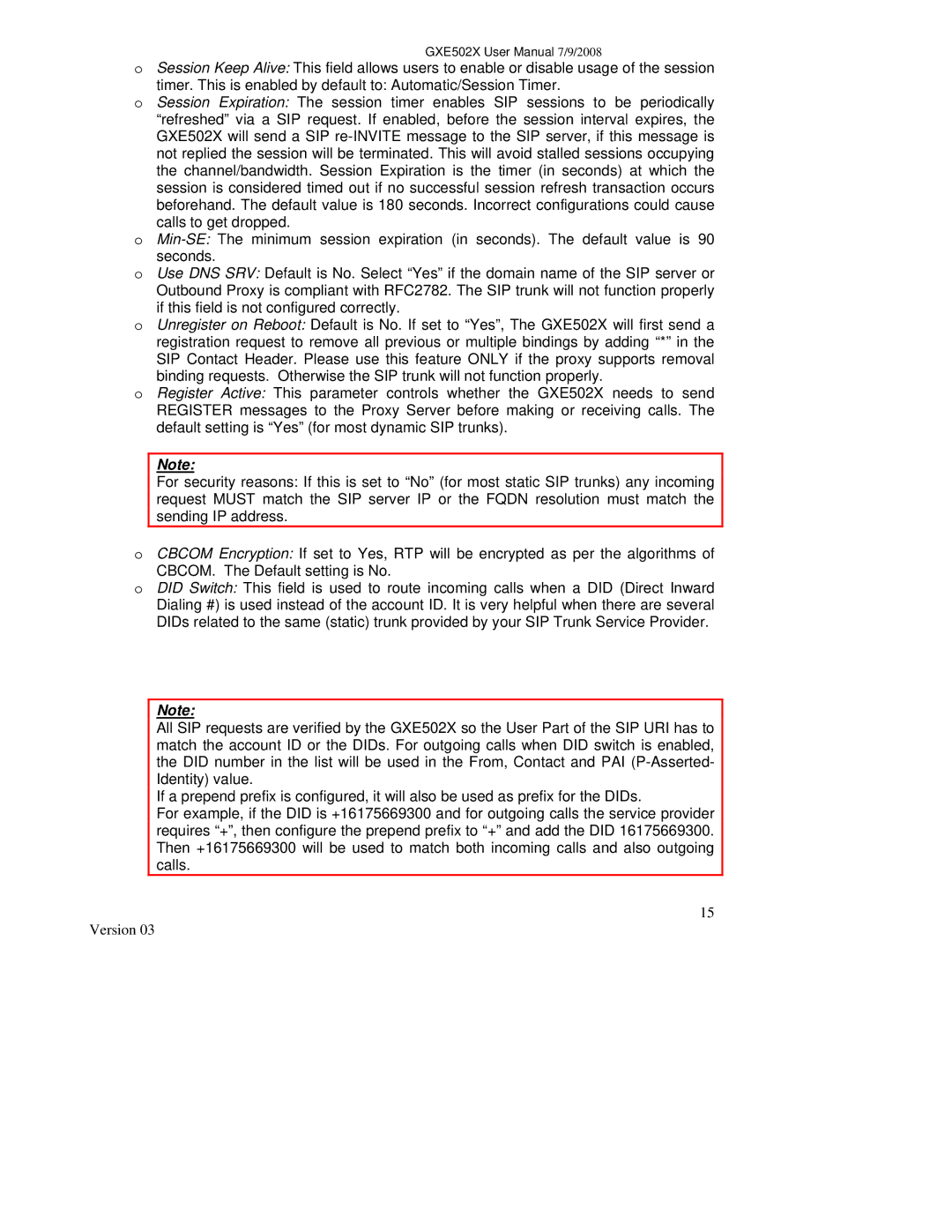
GXE502X User Manual 7/9/2008
oSession Keep Alive: This field allows users to enable or disable usage of the session
timer. This is enabled by default to: Automatic/Session Timer.
oSession Expiration: The session timer enables SIP sessions to be periodically “refreshed” via a SIP request. If enabled, before the session interval expires, the GXE502X will send a SIP
calls to get dropped.
o
oUse DNS SRV: Default is No. Select “Yes” if the domain name of the SIP server or Outbound Proxy is compliant with RFC2782. The SIP trunk will not function properly
if this field is not configured correctly.
oUnregister on Reboot: Default is No. If set to “Yes”, The GXE502X will first send a registration request to remove all previous or multiple bindings by adding “*” in the SIP Contact Header. Please use this feature ONLY if the proxy supports removal binding requests. Otherwise the SIP trunk will not function properly.
oRegister Active: This parameter controls whether the GXE502X needs to send REGISTER messages to the Proxy Server before making or receiving calls. The default setting is “Yes” (for most dynamic SIP trunks).
Note:
For security reasons: If this is set to “No” (for most static SIP trunks) any incoming request MUST match the SIP server IP or the FQDN resolution must match the sending IP address.
oCBCOM Encryption: If set to Yes, RTP will be encrypted as per the algorithms of CBCOM. The Default setting is No.
oDID Switch: This field is used to route incoming calls when a DID (Direct Inward Dialing #) is used instead of the account ID. It is very helpful when there are several DIDs related to the same (static) trunk provided by your SIP Trunk Service Provider.
Note:
All SIP requests are verified by the GXE502X so the User Part of the SIP URI has to match the account ID or the DIDs. For outgoing calls when DID switch is enabled, the DID number in the list will be used in the From, Contact and PAI
If a prepend prefix is configured, it will also be used as prefix for the DIDs.
For example, if the DID is +16175669300 and for outgoing calls the service provider requires “+”, then configure the prepend prefix to “+” and add the DID 16175669300. Then +16175669300 will be used to match both incoming calls and also outgoing calls.
15
